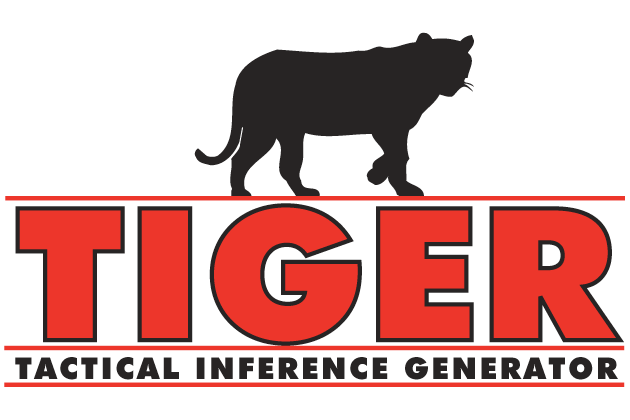Computational military reasoning is a phrase that I coined to describe the process of a machine performing human-level analysis of tactical and strategic problems. I have spent the last 30 years of my life working on this problem. It was the theme of my doctoral research in computer science. The abstract for my doctoral dissertation reads:
We present here TIGER, a Tactical Inference Generator computer program that was designed as a test-bed program for our research, and the results of a series of surveys of Subject Matter Experts (SMEs) testing the following hypotheses:
Hypothesis 1: There is agreement among military experts that tactical situations exhibit certain features (or attributes) and that these features can be used by SMEs to group tactical situations by similarity.
Hypothesis 2: The best match (by TIGER of a new scenario to a scenario from its historical database) predicts what the experts would choose.
We have conducted three surveys of SMEs and have concluded that there is, indeed, a statistically significant confirmation of Hypothesis 1, that there is agreement among military SMEs that tactical situations exhibit certain features (or attributes) and, that these features can be used to group, or identify, similar tactical situations. The statistical confidence level for this confirmation of Hypothesis 1 is greater than twice the prior probability.
In order to test Hypothesis 2 we constructed, after SME survey analysis, a series of algorithms, which we present here, for the analysis of SME identified tactical features (or attributes) including: interior lines, restricted avenues of approach, restricted avenues of attack, slope of attack, weighted force relationships and anchored or unanchored flanks. Furthermore, the construction, and implementation, of these algorithms, required the design and implementation of certain ‘building block’ algorithms including: range of influence, optimal FindPath, ComputeGroupsByThreshold and ComputeGroupsByNumber.
We further present an overview of TIGER, itself, and the built-in utilities necessary for creating three-dimensional tactical situations, complete with terrain, elevation and unit types as well as our implementation of Gennari, Fisher and Langley’s CLASSIT classification system.
Lastly, we present TIGER’s classification of twenty historical tactical situations and five hypothetical tactical situations and the SME survey results of TIGER’s classification that resulted in TIGER correctly predicting what the SMEs would choose in four out of five tests (using a one sided Wald test resulted in p = 0.0001 which is statistically significant).
The entire dissertation can be downloaded here
I have also written a number of papers about implementing tactical maneuvers: “Implementing the Five Canonical Offensive Maneuvers in a CGF Environment,” which can be downloaded here. And “Algorithms for Generating Attribute Values for the Classification of Tactical Situations,” which can be downloaded here.
What will make General Staff stand out from other wargames is that it will be the first commercial computer wargame to implement this research. I have high hopes that General Staff will have the most advanced tactical AI ever produced in a computer wargame.

